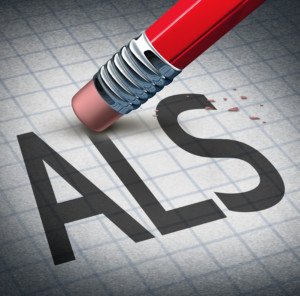
The “most compelling” breakthrough for an ALS cure has halted the progression of this disease in mice, but when will human clinical trials start?
The breakthrough made waves at the beginning of 2016.
“We are shocked at how well this treatment can stop the progression of ALS,” notes Joseph Beckman, lead author of the Oregon State University research. He’s a professor of biochemistry and biophysics.
What sounds like it can be a potential cure for ALS is copper – more specifically copper-ATSM.
Thus far the results in mice have been astounding. I googled for an update on this information, and the search results only go to as late as March 2016 – recaps of Dr. Beckman’s mouse study.
ALS Is Halted in Mice
In ALS, motor neuron death occurs in the spinal cord. Copper-ATSM helps deliver the mineral copper to cells that have damaged mitochondria (energy sources).
ALS progression was stopped in one type of mouse model. Without treatment, these mice would die within two weeks. The copper treated mice lived over 650 days.
Two weeks vs. 650 days is a big deal for mice, being that their average healthy lifespan is just a few years.
The copper administration for some of the ALS mice was removed to see what would happen. ALS symptoms returned within two months.
Without a reinstatement of treatment, these mice died within 30 days.
In mice for which the treatment was resumed, the ALS symptoms disappeared; the mice lived another six to 12 months.
This sounds like an ALS cure – for mice, at least. The toxicity potential for copper is actually quite low, too.
The researchers warn that these results in NO WAY mean that a person with ALS will benefit from a store-bought copper supplement and strongly advise against taking this.
“We have a solid understanding of why the treatment works in the mice,” says Dr. Beckman in the report, “and we predict it should work in both familial and possibly sporadic human patients.”
Beckman points out that “we are moving to human trials as quickly as we can.”
I sure hope there isn’t a holdup. This report, in full in the journal Neurobiology of Disease, came out in January 2016 – 14 months ago. I even searched on Google Scholar and did not find any new related studies.
I’ll just assume that human trials eventually did get underway and are still in progress.
Remember, it requires much less time to see what a trend is for mice, with their naturally very short lifespans, than with humans.
Fourteen days without symptoms in mice is a lot more significant than 14 days of remission in people. In people with ALS, 14 days is not enough time to detect a halt of progression.
Exactly how does this copper therapy work?
• The mice were genetically engineered to carry the humane gene for this: copper chaperone for superoxide dismutase (CCS). CCS inserts copper into the superoxide dismutase.
• Without treatment the mice who carry these human genes will die fast.
• Getting copper into specific cells—that are in the spinal cord—is key to treating or curing ALS.
• The copper also needs to be brought into mitochondria that’s been weakened by copper deficiency.
• Copper helps stabilize superoxide dismutase, which is a protein we need to live.
• Without enough copper, the superoxide dismutase will become toxic, killing motor neurons.
• If this treatment works in people, it would halt the progression of ALS at whichever stage it was at, but it would not reverse the damage already done.
Update on this Exciting Research
Here’s my interview with Dr. Beckman with updated information about the copper study.

























